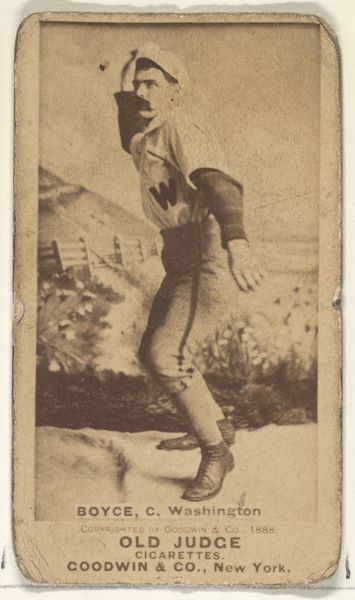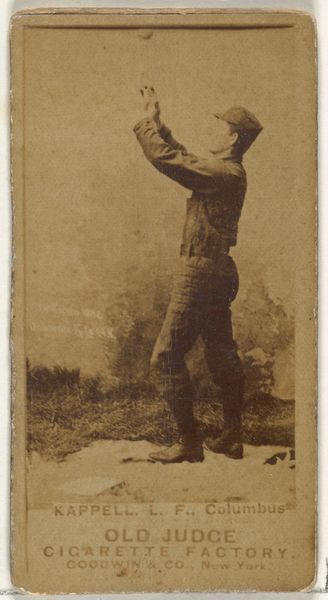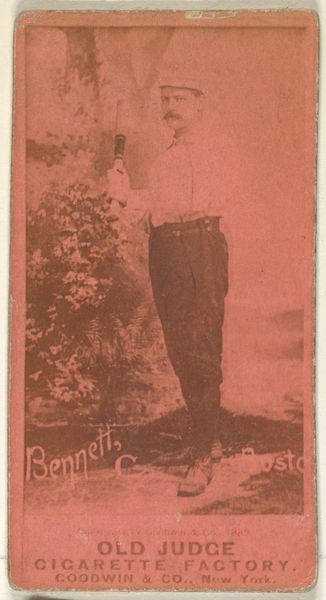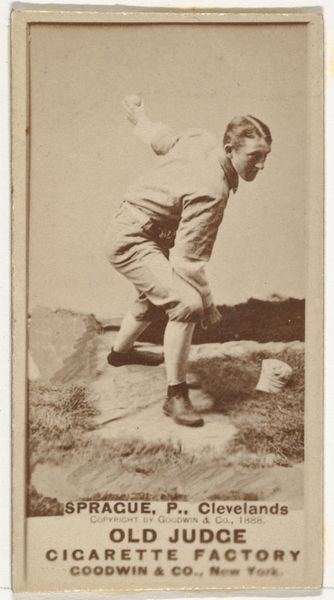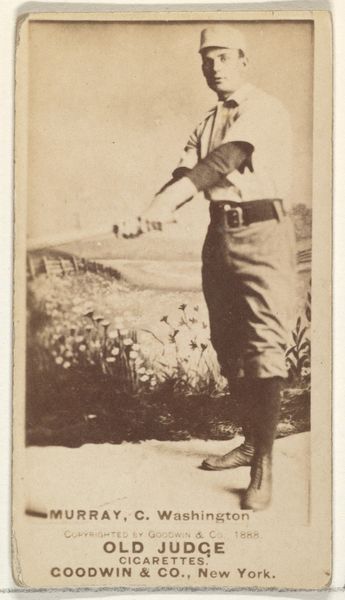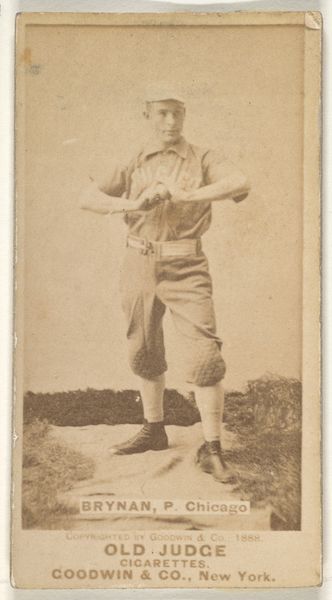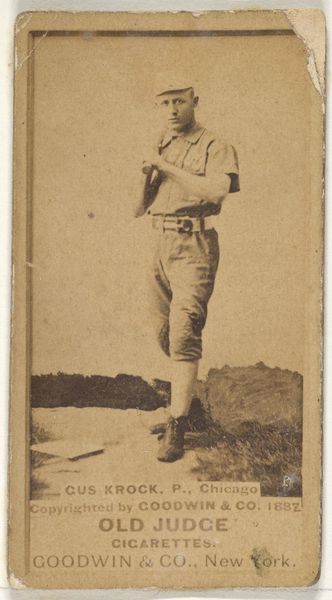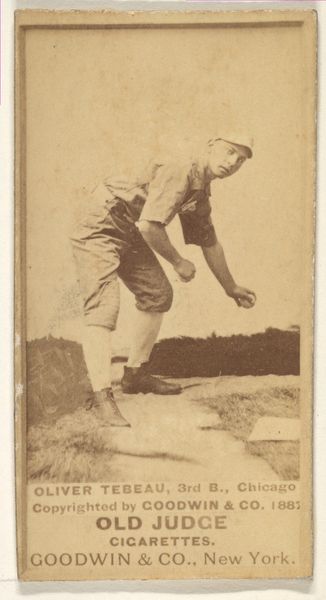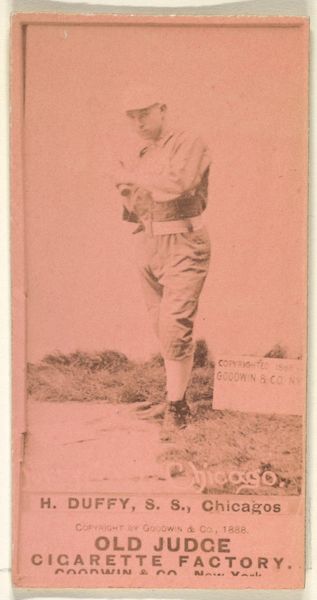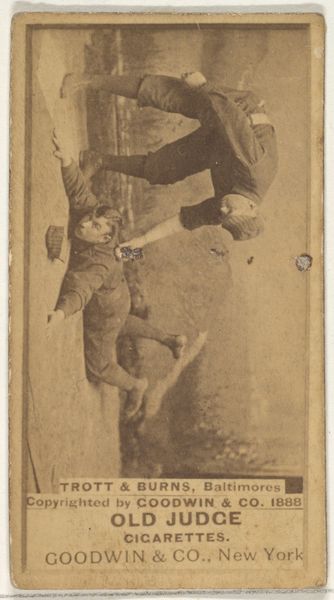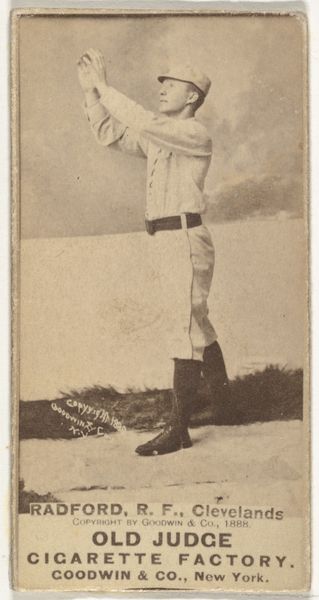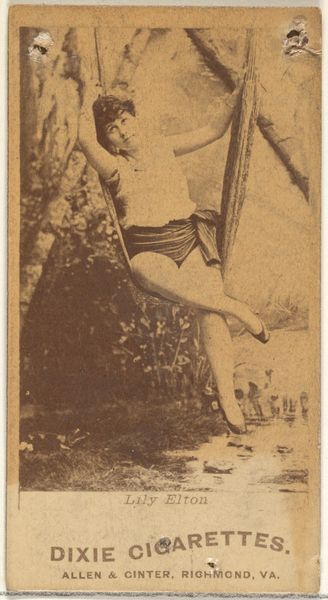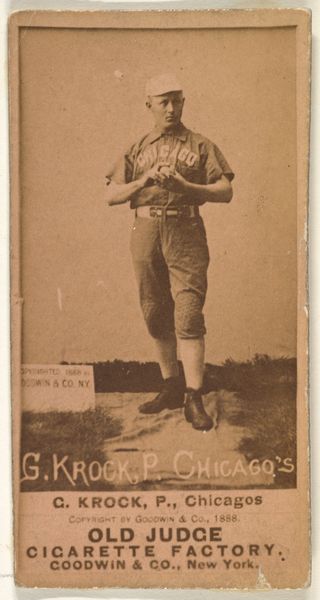
August H. "Gus" Krock, Pitcher, Chicago, from the Old Judge series (N172) for Old Judge Cigarettes 1888
0:00
0:00
print, photography
#
portrait
# print
#
baseball
#
photography
#
men
#
history-painting
#
athlete
Dimensions: sheet: 2 11/16 x 1 3/8 in. (6.9 x 3.5 cm)
Copyright: Public Domain
Curator: This is a baseball card from the "Old Judge" series produced in 1888 by Goodwin & Company. It features August H. "Gus" Krock, a pitcher for the Chicago team. The card itself is a print based on a photograph, a relatively new medium at the time. Editor: There’s an oddly unsettling quality to this card. The sepia tone flattens the image, and Gus looks isolated and strangely vulnerable against that indistinct background, as though he’s alone on stage with no crowd, as opposed to on a field. The man looks thin too, and the uniform looks like his dad's hand-me-downs. The advertisement underneath him almost overwhelms him! Curator: That isolating effect you describe is intensified, I think, by the figure's sharp contour and the fairly simple composition; this really enhances the almost geometric placement of his body in relation to the lettering, to its hard edges. The way his limbs are posed in almost perfect angles lends a peculiar formal quality. We might look to artists of the period such as Degas for this type of rendering that freezes a body’s momentum. Editor: Right, but Goodwin & Co. sought to associate the rugged athleticism of baseball with the suave appeal of cigarettes—linking Krock to this particular form of commercialism feels, at best, ethically murky given what we now know about the marketing and production practices of that time. Moreover, mass culture representations of athletes also promoted specific notions of masculinity. It makes you wonder how inclusive, or exclusive, turn-of-the-century ideals of American masculinity and athleticism actually were. The very framing of this artwork implicates us in such debates, whether we want it to or not. Curator: Agreed, such analysis brings a critical historical depth to how we can understand images like these. The subtle tonalities, framing, and Krock's elegant pose all come together to transform this very particular image from ephemera into an icon. Editor: So what starts as a sepia-toned piece of Americana, on closer viewing reveals multiple intersecting threads related to commerce, health, sport, and the very construction of identity. It certainly does provide a glimpse of a bygone era and its contradictions.
Comments
No comments
Be the first to comment and join the conversation on the ultimate creative platform.
